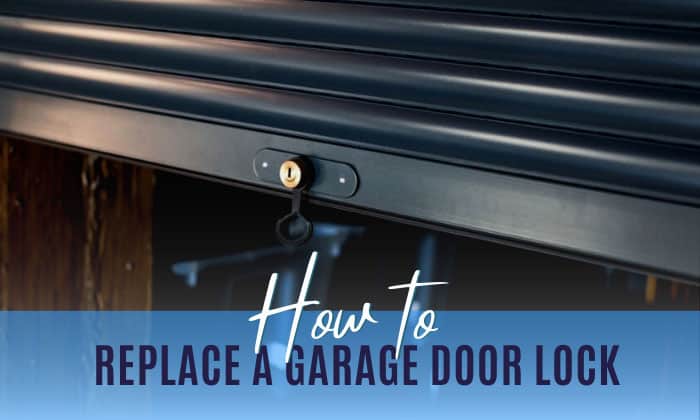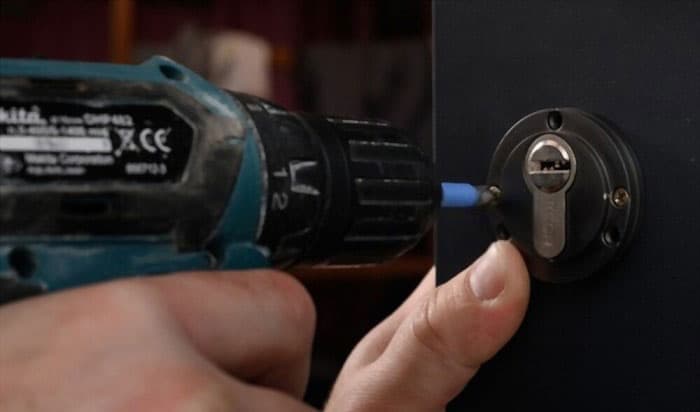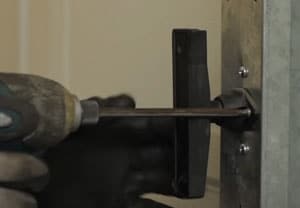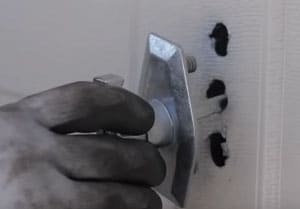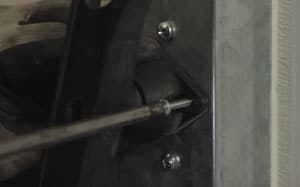It goes without saying that your garage is as important as your house. And truth be told, a garage is the most targeted point for every burglar and trespasser.
So, of course, you want to keep its door and lock in their best condition to enjoy maximum security. After all, your investments, valuable items, and even a connected door to your house are behind that shed.
That’s why learning how to replace a garage door lock is a great measure to deter possible break-ins. Follow this guide to change a garage door lock properly.
Table of Contents
Step-by-Step to Replace a Garage Door Lock
Replacing a garage door lock is an easy task. You just have to be aware of the proper procedures, learn the parts of the lock, and be equipped with the right tools to do the job.
This article will mainly focus on changing the T-handle up and over garage door lock.
What to prepare
- New T-handle lock kit to replace your manual garage door lock broken parts
-
- New garage door lock barrel
- Key lock mounting plate
- Interior lock mechanism
- Screws
- Phillip head or flat head screwdriver
- An extra pair of hands
- Might be needed: Driller or marker if drilling a hole into the door is necessary.
Step 1. Prepare the necessities and study the lock diagram
Of course, the first thing you need to do before diving into the actual process of changing your garage door lock is securing the necessary equipment and studying the mechanism diagram of the lock.
A T-handle lock, for instance, often has a cylinder-shaped key, two bolts, and a cable system. When you turn the handle, pressure is exerted on the cable, which retracts the dead bolt to push the door open.
Step 2. Remove the old garage lock
Of course, for garage door handle replacement, you first need to remove the old lock you want to get rid of. So, go inside the garage—where you have to remove the garage lock.
The main task is to detach the screw to unmount the lock from the door.
Typically, the screws are easy to locate. However, some garage locks have a handle over the screw area. So if you cannot spot or access the screws, you need to unfasten that piece first.
Once you have gotten the covering piece off, you can loosen all the screws that hold the T-handle lock on the door.
Then, you can remove or ask your assistant to remove the handle from the outside.
Step 3. Install the outer T-handle to the garage door
To install T-handle garage door lock:
- On the outside, ask your assistant to insert the lock handle into its holes and hold the part throughout the step.
- Locate the garage door lock barrel screw spots or the spigots. Align the screw holes to those spigots.
- Secure the mounting plate to the outer T-handle together by inserting the screw through the plate to the spigots.
You’re essentially doing the opposite of the second step here.
Step 4. Install the interior locking mechanism.
For a successful garage door lock cylinder replacement, the interior handle must be inserted into the interior locking mechanism. Once the alignment is ensured, you can start installing the locking mechanism over the plate.
Just do a reverse step on how you removed the previous garage door lock. Make sure that the spring latch is attached to the interior lock.
Note: if the screw holes of your new lock do not align with the pre-drilled holes on your garage door pan, then it is best to drill a new set of holes than to use the old ones for security and duty purposes.
Once everything is put into place, test the interior lock and see if the spring latch reacts. If it does, then you have a successful garage door handle installation.
Frequently Asked Questions
What are the main types of garage door lock?
Commonly, the T-handle lock is the main pick. But there are also other garage door locks like rim locks, padlocks, and automatic door locks.
What are the parts of a garage door lock?
For a T-handle lock, there are:
- The T-handle – A T-shaped handle used at the house’s exterior. The key way is located here.
- The spindle – The part that connects to the interior locking mechanism. The spindle will be triggered once the correct key is turned.
- The spigots – These are the protruding parts that sit beside the spindle.
- The interior lock – This is the mechanism that sits inside the garage. It is attached to the spring latch that opens the garage door when the spindle is triggered.
Some other examples are:
- Slide locks – which have latches that connect to vertical tracks on the interior side of the garage
- Ground locks – also known as padlocks attached to plates on the ground and are made to resist crowbars
- Electric locks – These have motors that activate at the press of a button. Some models boast fingerprint recognition and other advanced technologies.
Read more: How do garage door locks work?
How much does it cost to replace a lock on a garage door?
Doing it yourself would not cost you as much as hiring a contractor. Professional fees go up to $300, depending on your garage door situation.
Conclusion
Learning how to replace a garage door lock would be more than just handy. You can use this knowledge to replace the garage door lock if you bought a new house or simply lost your key.
Always remember to only partially close the garage door if you are working alone, as it will be impossible to open the door once it’s locked without key.

I am the last member to join Revolar and might be just the luckiest to work with dedicated people like Teddy and John. Our team has established a process where my only job is writing the best content to deliver incredible ideas and guides.


